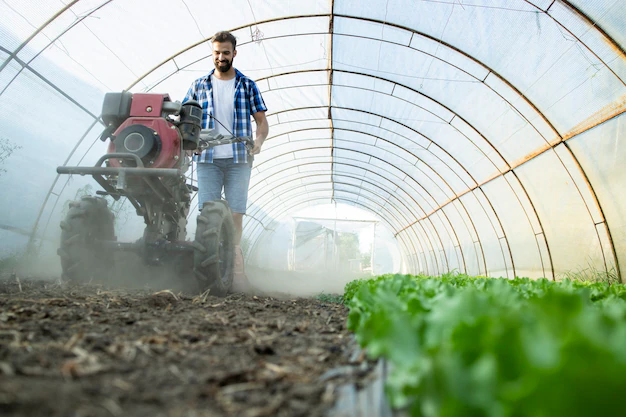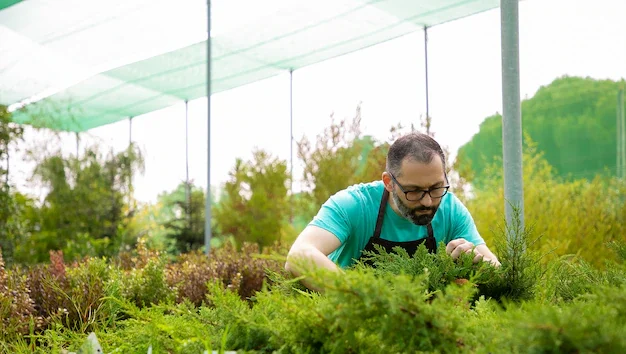Table of Contents
ToggleHow to Farm Organically in America: A Complete Guide
If you’re wondering how to farm organically in America, you’ve come to the right place. Organic farming has become a growing trend in America as more and more consumers demand healthy, environmentally friendly food options. But how to farm organically in America is not always easy as it requires knowledge, dedication, and understanding of rules and regulations. In this guide, we want to walk you through everything you need to know about organic farming in America and give you essential tips for success.

Why Farm Organically in America?
Before going into the practical steps of how to farm organically in America, it is important to understand the benefits of organic farming. Organic farming in America is not just about growing food without synthetic pesticides or fertilizers, but a holistic approach that prioritizes sustainability, biodiversity and soil health. By choosing to farm organically in America, you can contribute to healthy ecosystems, reduce the environmental impact of agriculture, and grow food free of harmful chemicals.
Demand for organic products in the US
The demand for organic food in the US has been increasing over the past few years, making organic farming a profitable business. Consumers are increasingly looking for food grown without pesticides or GMOs and are willing to pay a premium for it. Therefore, learning how to farm organically in America not only benefits your farm, but also provides access to a growing market of health-conscious buyers.
If you want food for organic farming : https://speximagro.com/contact-us/
You can get it from here.

Steps on how to farm organically in America
Step 1: Understand the principles of organic farming
When learning how to farm organically in America, it is important to understand the basic principles of organic farming. Organic farming in America follows strict guidelines that focus on creating healthy soil, maintaining ecological balance, and promoting biodiversity. Unlike conventional agriculture, which often relies on synthetic chemicals, organic agriculture in America promotes the use of natural methods to manage pests, increase soil fertility, and improve crop yields.
Step 2: Select suitable crops for organic farming
Not all crops are suitable for organic farming, so choosing the right crops is key to your success. When figuring out how to farm organically in America, consider factors such as your region’s climate, soil type, and the specific needs of organic crops. Common crops grown by organic farmers in the United States include vegetables such as lettuce, tomatoes, and carrots, as well as fruits such as apples, berries, and peaches. Additionally, grains such as wheat and corn are popular choices for organic farming.

Step 3: Transition to organic practices
For those who already farm conventionally, transitioning to organic farming in America requires careful planning. During the transition period, which can take up to three years, your farm should avoid using synthetic chemicals. This period is critical to restoring soil health and ensuring your farm meets USDA organic standards. How to farm organically in America after the transition includes using organic inputs such as natural fertilizers, crop rotation, and cover crops to increase soil fertility.
Step 4: Certified Organic
One of the most important steps in learning how to farm organically in the US is to obtain organic certification. In the USA, the USDA National Organic Program (NOP) regulates organic farming practices. In order to market your produce as organic, you need to apply for certification from a recognized certifying agent. The certification process involves detailed record-keeping and inspections to ensure your farming practices comply with organic standards. Although it can be time-consuming and charge a fee, organic certification in the US is critical to entering the organic market.
Step 5: Implement sustainable practices
Sustainability is at the heart of organic farming, and knowing how to farm organically in America means adopting practices that protect the environment. Key sustainable practices include crop rotation, which prevents soil erosion and pest accumulation, and the use of organic mulches to retain moisture and suppress weeds. Additionally, composting and adding natural fertilizers can enrich the soil without resorting to artificial chemicals.
Step 6: Market your organic products
Once you’ve figured out how to farm organically in America, it’s time to market your organic produce. There is a growing consumer base in America that values organic products, and positioning yourself effectively can increase sales. Direct sales from farmers markets, CSA (community supported agriculture) programs, and partnerships with organic grocers are great ways to reach your target customers. Be sure to highlight your organic certification and sustainable farming practices to build consumer confidence.

Frequently asked questions about how to farm organically in the USA
The cost of organic farming in the US can be higher than conventional farming because of the need for organic inputs and certifications. However, organic farms often make higher profits due to the command of premium priced organic products in the market.
It usually takes three years to convert to organic farming in the USA. During this time, your farm must be free of synthetic chemicals to meet USDA organic standards.
Yes, if you want to label your products as organic in the US, certification from an accredited organization is required. This assures consumers that your products meet organic standards.
The best crops to grow organically in the U.S. vary by region, but popular choices include leafy greens, vegetables like tomatoes, and carrots, as well as fruits like apples, berries, and melons. You can also grow organic grains like wheat and oats.
Conclusion: Starting Your Organic Farm in America
Ultimately, learning how to farm organically in America is a journey that requires patience, knowledge, and dedication. By understanding the principles of organic farming, choosing the right crops, obtaining organic certification, and adopting sustainable farming practices, you can create a successful organic farm that aligns with your values and meets growing consumer demand. Whether you’re transitioning to organic farming or just starting out, the benefits of farming organically in America are worth the effort for your farm’s profitability and the health of the environment.
